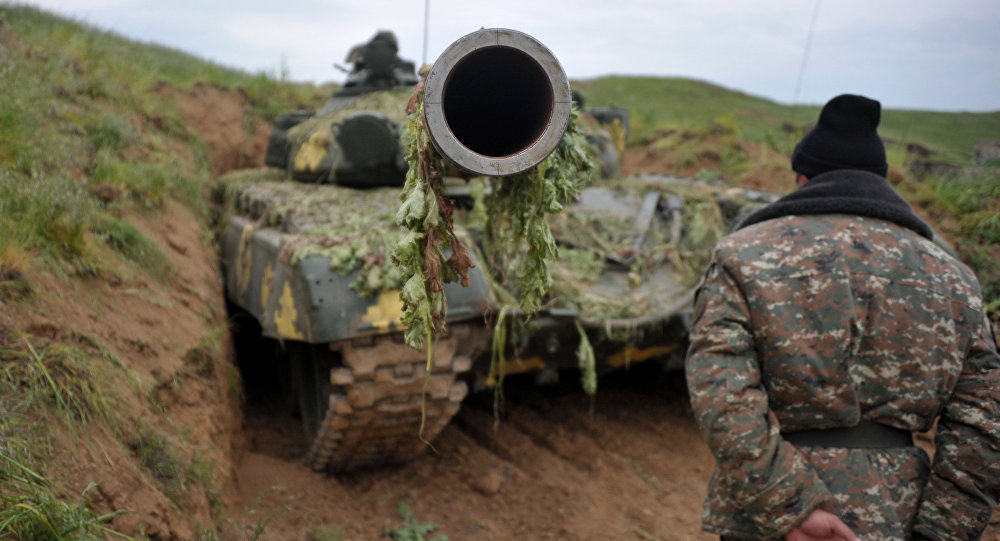Russian President Vladmir Putin and Azerbaijani President Ilham Aliyev met last week in Sochi to discuss what Putin called “difficult problems” in the region, including the longstanding conflict between Azerbaijan and Armenia over the breakaway region of Azerbaijan Nagorno Karabakh..
As two former Soviet republics, both Armenia and Azerbaijan have deep historical ties to Russia and have come to rely upon it as a mediator in the conflict.
But Moscow is not totally independent or free from bias, according to some analysts.
Elkhan Shahinoglu, head of the Atlas Research Center in Baku, says there were no real visible outcomes from what was the eighth face-to-face meeting between Putin and Aliyev over the past four years.
“Our greatest expectation from this meeting was related to the Nagorno Karabakh conflict. We know that Armenia depends fully on Russia, and if Moscow wants, the conflict could come to an end immediately,” Shahinolgu told Caspian News.
“But the meeting in Sochi failed to fetch that desired settlement. The situation along the line of contact between Armenian and Azerbaijani troops is still tense, with regular local skirmishes and ceasefire violations,” Shahinoglu said.
The start of the gradual collapse of the Soviet Union in 1988 ignited Armenia’s territorial claims over Nagorno Karabakh, an area located in southwestern Azerbaijan.
By 1992, after the Soviet Union was dissolved and Armenia and Azerbaijan became independent, a full-scale war erupted, which resulted in Armenia occupying not only Nagorno Karabakh but seven surrounding districts as well, comprising over 20 percent of Azerbaijan. In 1994 Russia brokered a ceasefire agreement, but only after more than 20,000 Azerbaijanis had been killed and nearly a million people internally displaced. In addition, 4,000 citizens were taken captive, hostage, or went missing.
According to Azerbaijan’s defense ministry, Armenian armed forces have violated the ceasefire more than five hundred times since Aliyev’s meeting with Putin last Tuesday.
As a co-chair to the Organization for Security and Cooperation in Europe (OSCE) Minsk Group, along with France and the US, Russia excludes any military solution to the conflict. At the same time, Moscow has been trying to maintain a balance of power in the South Caucasus by selling arms to both countries. Armenia depends almost completely on Russian-supplied arms, which are sold at reduced prices, and Moscow maintains two military bases in Armenia.
Azerbaijan has also been a good customer for Russian arms manufacturers. In 2013, an agreement was signed to import $4 billion worth of Russian arms, which prompted criticism from lawmakers in Yerevan. Russian officials said the transaction was just that, and Nikolai Bordyuzha, the secretary general of the Collective Treaty Organization, Russia’s equivalent to NATO, called it “simple business deriving from [Russia’s] economic interests.”
Weapons purchased from Russia were used during the most heated armed clash between Armenia and Azerbaijan since 1994, namely during the Four Day War, or April War, which lasted from April 1-4, 2016. The war claimed dozens of lives from both sides and resulted in Azerbaijan reclaiming about 2,000 hectares from Armenian occupation.
Only 15 to 20 percent of Azerbaijan’s armed forces were deployed to the frontline during the war to repel attacks, according to Azerbaijan’s Defense Minister Zakir Hasanov.
“However, Armenia dispatched all of its armed forces, even the reserve forces in Yerevan. On the second day of war Russia has started mediating the situation. Defense Minister Sergei Shoigu telephoned me and requested to stop operations, the government [of Russia] will negotiate about the situation,” Hasanov said in an interview with RIA Novosti on July 13.
Elkhan Shahinoglu from the Atlas Research Center believes that Shoigu’s call was one of Moscow’s moves to get Azerbaijan to stand down and forgo taking a lead over Armenia in reclaiming lost territory.
“We took into account Russia’s request and got nothing in response from the Russian side. Russia doesn’t allow us to hold military operations, but it annexes Crimea, dispatches an army to Georgia, and supports separatists in Ukraine’s Donbass region,” Shahinoglu said, referring to incidents within the past decade where Russia has used arms to intervene in neighboring countries.
Russia brokered two face-to-face meetings between the presidents of Armenia and Azerbaijan following the April War: One was held in May 2016 in Vienna, and another a month later in Saint Petersburg. Both were aimed at easing any post-war tension and once again try to move forward with resolving the conflict. News reports at the time stated that President Putin himself proposed at the St. Petersburg meeting that Armenia returns five of the occupied districts to Azerbaijan for the sake of sustainable peace.
Matthew Bryza, a former US Ambassador to Azerbaijan and American Co-Chair of the OSCE Minsk Group, said Russia’s proposal was good, but some local challenges prevented it from bringing desired results.
“President Putin last year made a very good proposal, last summer after the April 4 events. It was a very good proposal and Azerbaijan was in favor of it. And then in July in Yerevan there was a police station hostage crisis. I think that was largely to prevent [Armenian President] Sargsyan from accepting the proposal,” Bryza told Caspian News.







 Iran's senior military leaders described the drone and missile attack on Israel on April 14 night as “successful".
Iran's senior military leaders described the drone and missile attack on Israel on April 14 night as “successful".
 The number of evacuees from flooded areas in Kazakhstan has reached 97,852 people, including about 32,856 children since March 27.
The number of evacuees from flooded areas in Kazakhstan has reached 97,852 people, including about 32,856 children since March 27.
 Iranian President Ebrahim Raisi warned Israel that it would face a "real and extensive" response if it makes any "mistake" following Tehran’s missi...
Iranian President Ebrahim Raisi warned Israel that it would face a "real and extensive" response if it makes any "mistake" following Tehran’s missi...



